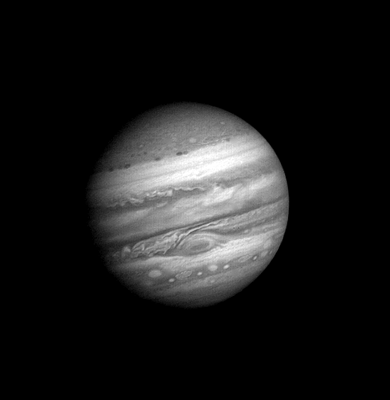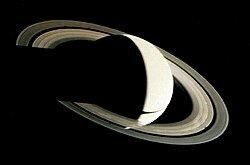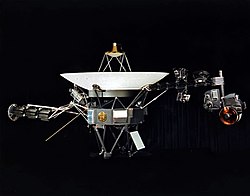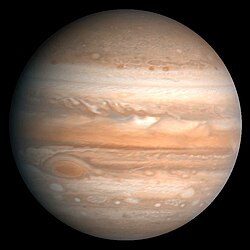790106-0203 Voyager 58M to 31M reduced
Größe:
390 x 400 Pixel (3105318 Bytes)
Beschreibung:
Jupiter seen by
Voyager 1 probe with blue filter. One image was taken every Jupiter day (approximately 10 hours). These pictures were taken from 01/06 to 02/03, 1979 ; and Voyager 1 flew from 58 million to 31 million kilometers from Jupiter during that time. The small, round, dark spots appearing in some frames are the shadows cast by the moons passing between Jupiter and the Sun, while the small, white flashes around the planet, are the moons themselves.
Suggested for English
Wikipedia:alternative text for images: animated view of planet getting larger. These pictures were taken every 10 hours over 28 days in 1979; each frame shows Jupiter at the same local time with the Great Red Spot appearing stationary within its cloud belt while clouds move right to left past it; other cloud belts move left to right. The small, round, dark spots appearing in some frames are the shadows cast by the moons passing between Jupiter and the Sun, while the small, white flashes around the planet, are the moons themselves.
Weitere Informationen zur Lizenz des Bildes finden Sie hier. Letzte Aktualisierung: Mon, 25 Sep 2023 00:19:47 GMT
Relevante Bilder
Relevante Artikel
Voyager 1
Voyager 1 ist eine Raumsonde der US-amerikanischen Raumfahrtbehörde NASA zur Erforschung des äußeren Planetensystems und des interstellaren Raums im Rahmen des Voyager-Programms. Sie wurde am 5. September 1977 vom Space Launch Complex 41 auf Cape Canaveral mit einer Titan-IIIE-Centaur-Rakete gestartet. Ihre identisch aufgebaute Schwestersonde Voyager 2 war bereits 16 Tage früher auf einer anderen Flugbahn gestartet. Voyager 1 flog zunächst die Planeten Jupiter und Saturn an und trat am 25. August 2012 als erstes von Menschen geschaffenes Objekt in den interstellaren Raum ein.
.. weiterlesen
































